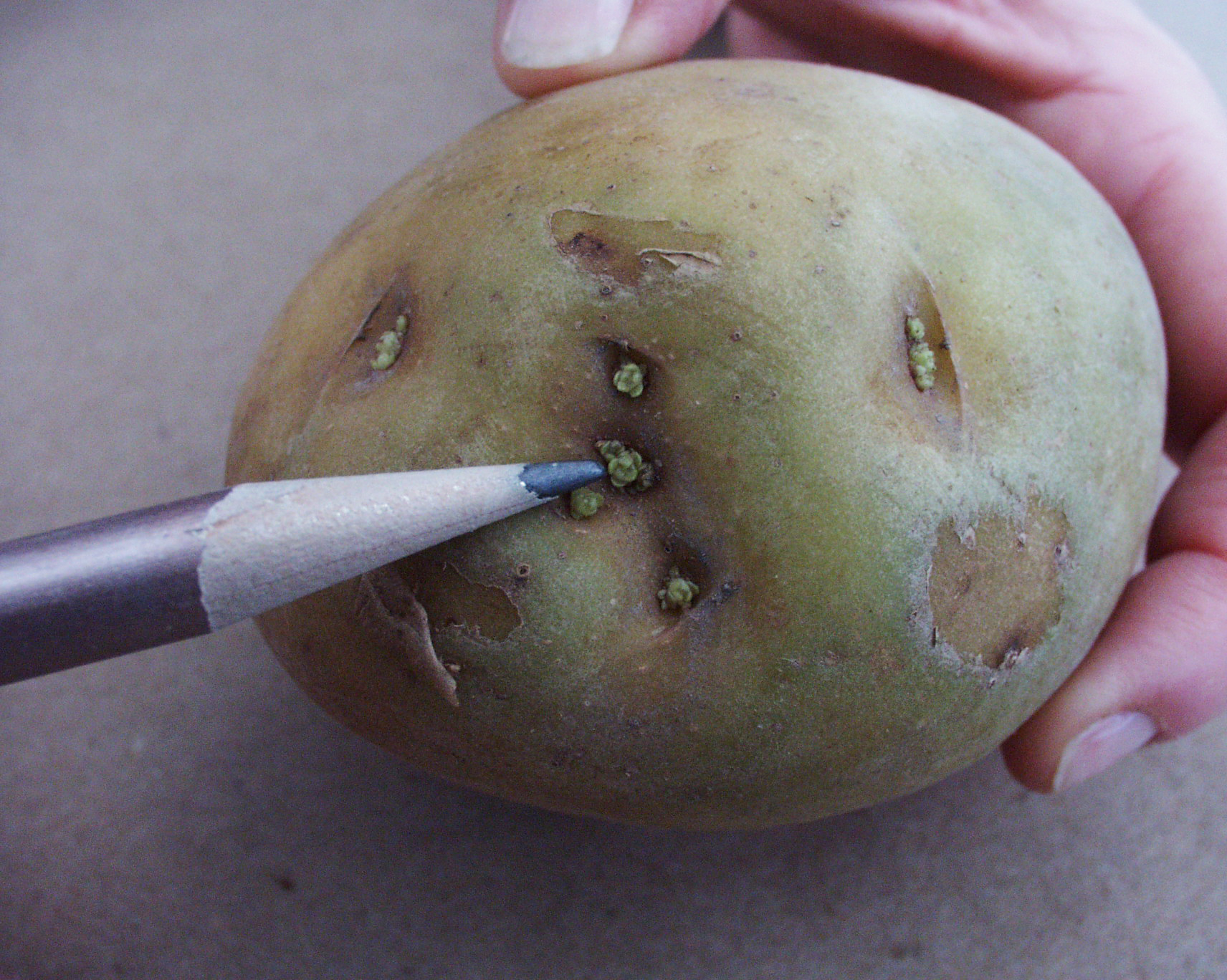Whether store-bought or homegrown, potatoes will turn green when they are exposed to light. Most folks know that they shouldn’t eat potatoes that have turned green, or should at least cut away the affected portion. But it’s not actually the green color that is the problem.
The green color comes from the pigment chlorophyll, produced as a response to light. The potato tuber that we eat is actually a modified stem structure that grows underground. The “eyes” of the potato tuber are buds, which will sprout into shoots.
Potatoes will turn green when growing too close to the soil surface as well as when stored under even low-light conditions. Mulching potato plants in the garden and storing harvested potatoes in complete darkness will prevent them from greening.
Chlorophyll is not toxic. However, another response of the potato tuber to light exposure is increased production of a colorless alkaloid called solanine. The amount of solanine increases with the length of exposure and the intensity of light.
Consuming a large quantity of solanine can cause illness or even death in extreme cases. However, most people are not likely to eat enough of the affected tissue to cause illness because of solanine’s bitter taste.
The highest concentration of solanine is in the skin of the potato; removing the green portion will also remove most of the toxin. Sprouts of the eyes are also high in solanine and should be removed before cooking.
The next time you see a green potato, be thankful for that color change because it is warning you of the presence of toxic solanine.

